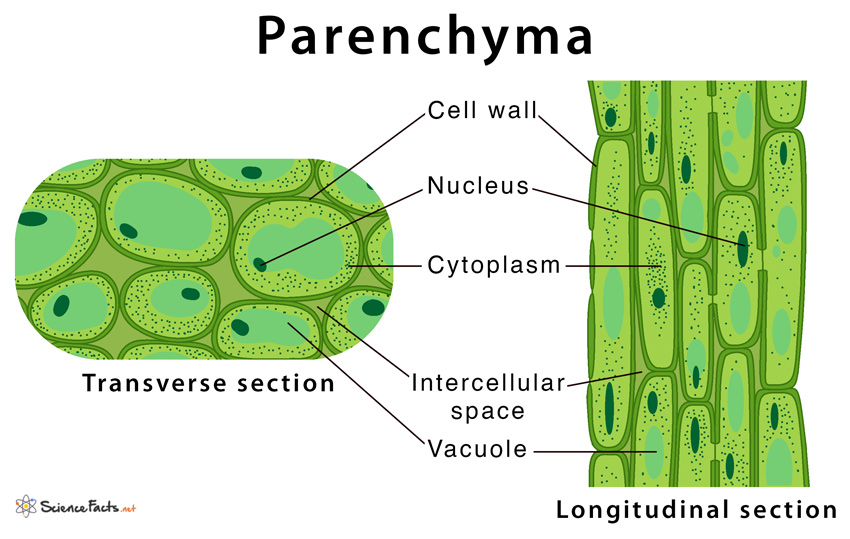Parenchyma in Plants
What is Parenchyma in Plants
Parenchyma is a thin-walled, actively dividing cell that makes up the inside of many non-woody plant structures such as stems, roots, and leaves. Parenchyma tissue is a type of simple permanent tissue that is fundamental to all plants.
The term ‘parenchyma’ has originated from the Greek word ‘Para’ which means beside and ‘Enchyma’ meaning inclusion. It was introduced in the 17th century when Robert Hooke discovered the plant cells.
Where are Parenchyma Found in Plants
They are mainly found in the soft, green parts of the plants such as ground tissues in stems, cortex of roots, mesophyll of leaves, and the endosperm of seeds. Parenchyma cells are also located in flowers and fruits.
Characteristics
- Living cells, capable of division and that give rise to all other cell types
- Polygonal in shape and sometimes oval or spherical with an isodiametric symmetry
- Has a length of 0.1–0.2 mm and a width of 0.01–0.05 mm
- The cells are tightly packed or may have small intercellular spaces
- The cell wall is usually thin and made up of cellulose and hemicellulose
- Comprises of a centrally located large vacuole
- They have a prominent nucleus and cytoplasm that holds other organelles in place
Functions
Based on their structure and location, parenchyma cells are classified into many different types, each performing specific functions as follows:
- Food Production: Chlorenchyma, present in green parts of the plant contains the green pigment, chlorophyll that helps in food production by photosynthesis
- Storage: Storage parenchyma contains large intercellular space which helps in the storage of starch, water, fats, and oil droplets
- Transport: Vascular and conjunctive parenchyma helps in the transport of water, nutrients, and other substances throughout the plant
- Gas exchange: Aerenchyma absorbs carbon dioxide and releases oxygen during the process of photosynthesis and respiration
- Reproduction: Meristemetic parenchyma divides and give rise to all other cell types and is thus called ‘totipotent’ cells
- Regeneration: Meristematic parenchyma retain their ability to divide even on maturity and thus help in regeneration and healing a plant’s wound
- Strength and Protection: Epidermal parenchyma, present in plant organs helps them to provide mechanical strength and protection from any physical damage
Other functions:
- Aerenchyma helps in floating of aquatic plants
- Epidermal parenchyma reduces evaporation of water droplets from the aerial parts of a plant and prevents them from drying out
-
References
Article was last reviewed on Saturday, March 6, 2021




